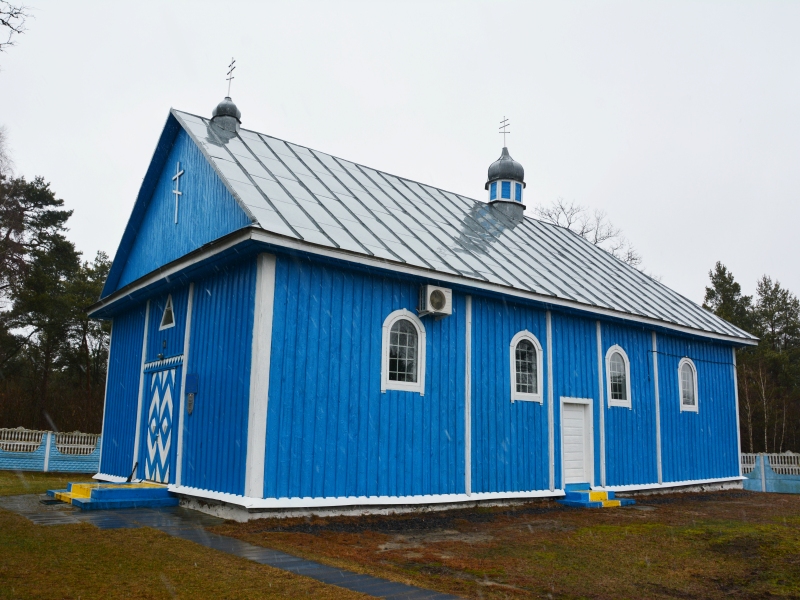History
The church's history begins in 1740, when Brest cupbearer Pavel Bukhovetsky and his wife Rozalia built a wooden church on their estate «Dyadkovichi» in honor of the Intercession of the Holy Virgin and the Exaltation of the Holy Cross. The parish was granted liturgical items, a priest’s house, and a land allotment. The first priest, Ioan Pilikhovsky, oversaw the spiritual life of the parishioners, strictly adhering to church canons.
In the 19th century, the building required renovation, and in 1888, after restoration based on a project by engineer A. Remer, the church was re-consecrated. Parishioners actively participated in decorating and maintaining the church, donating icons, religious items, and shrouds — some of which were brought from America. The war years left their mark as well: during World War I, a soldier of the French Foreign Legion was buried here, and the church bell rang in his honor. This bell was hidden during World War II and restored after the liberation.
Architecture
The church is a wooden structure consisting of two rectangular log sections — the main volume and the apse — joined under a common gable shingle roof with hipped elements. A sacristy is attached to the apse. The facades are clad with wooden boards, decorated with pilasters and cornices, and the windows are rectangular and simple in design. Wooden choirs are located above the entrance, and the interior ceiling is flat.
Of particular interest is the gate-bell tower — a two-tiered bell tower with a tented roof. The upper tier is open and supported by a frame structure, while the lower tier is closed and vertically boarded. The entire building and its elements exhibit classic features of traditional Belarusian wooden architecture, carefully preserved to this day.
Excursions
The Intercession Church in Detkovichi is included in excursions across Belarus, particularly those focused on religious and architectural heritage. It is a popular stop on excursions from Minsk, as well as from Brest and other cities. Tourists have the opportunity to explore the church’s remarkable history, hear local legends, see shrapnel marks on the ceiling from wartime, and experience an authentic atmosphere of spiritual reverence.
Visitors can also see the grave of the Foreign Legion soldier and learn about the story of the bell’s concealment and restoration in difficult times. This makes the visit not just an architectural tour, but a genuine journey through living history.
